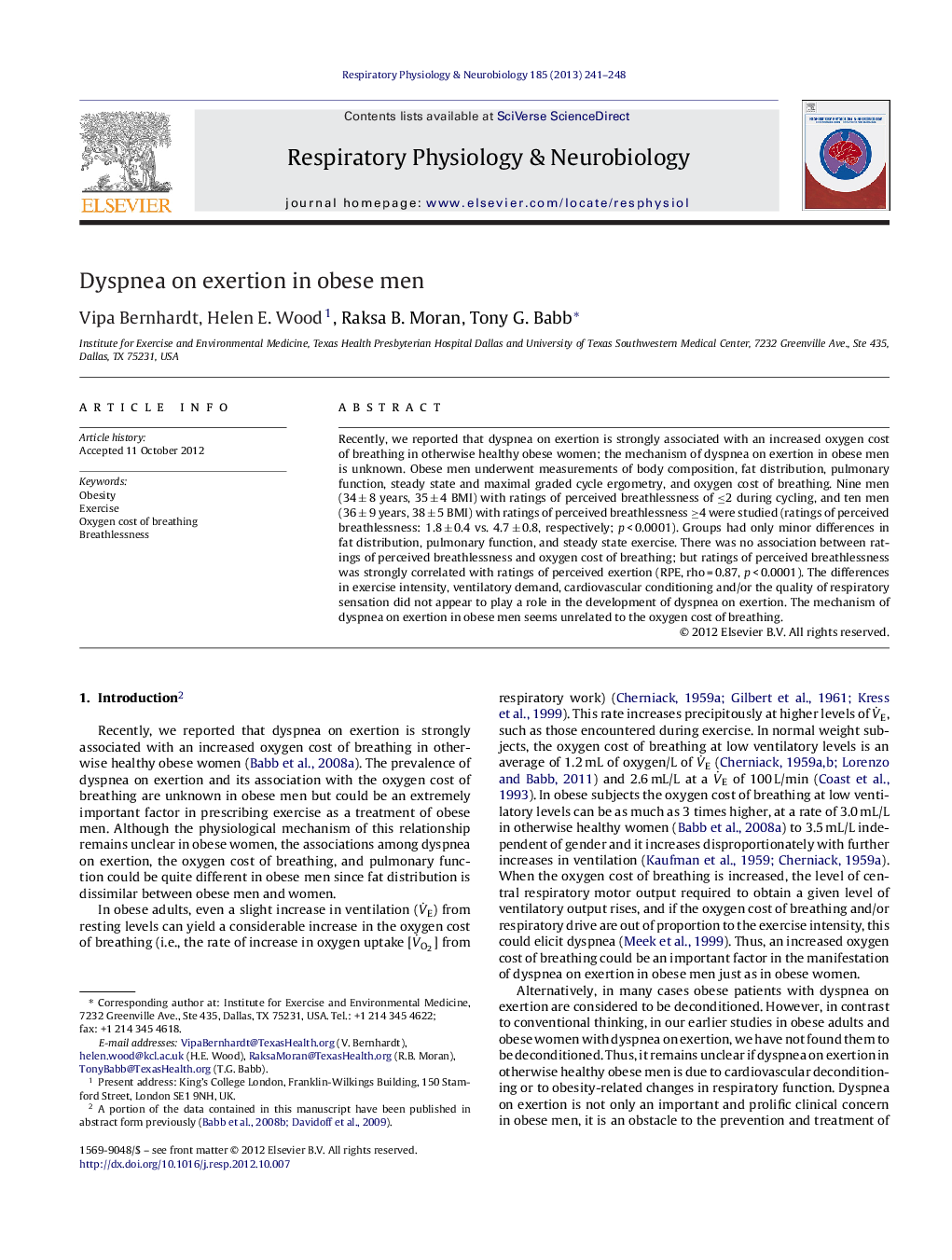| Article ID | Journal | Published Year | Pages | File Type |
|---|---|---|---|---|
| 2847276 | Respiratory Physiology & Neurobiology | 2013 | 8 Pages |
Recently, we reported that dyspnea on exertion is strongly associated with an increased oxygen cost of breathing in otherwise healthy obese women; the mechanism of dyspnea on exertion in obese men is unknown. Obese men underwent measurements of body composition, fat distribution, pulmonary function, steady state and maximal graded cycle ergometry, and oxygen cost of breathing. Nine men (34 ± 8 years, 35 ± 4 BMI) with ratings of perceived breathlessness of ≤2 during cycling, and ten men (36 ± 9 years, 38 ± 5 BMI) with ratings of perceived breathlessness ≥4 were studied (ratings of perceived breathlessness: 1.8 ± 0.4 vs. 4.7 ± 0.8, respectively; p < 0.0001). Groups had only minor differences in fat distribution, pulmonary function, and steady state exercise. There was no association between ratings of perceived breathlessness and oxygen cost of breathing; but ratings of perceived breathlessness was strongly correlated with ratings of perceived exertion (RPE, rho = 0.87, p < 0.0001). The differences in exercise intensity, ventilatory demand, cardiovascular conditioning and/or the quality of respiratory sensation did not appear to play a role in the development of dyspnea on exertion. The mechanism of dyspnea on exertion in obese men seems unrelated to the oxygen cost of breathing.
► Otherwise healthy, obese men with or without dyspnea on exertion (DOE) were studied. ► 37% of men studied had elevated ratings of perceived breathlessness during exertion. ► Oxygen cost of breathing was not increased in men with DOE vs. men without. ► Fat distribution and pulmonary function were not different between groups. ► Cardiovascular conditioning and quality of respiratory sensations and were not different.
